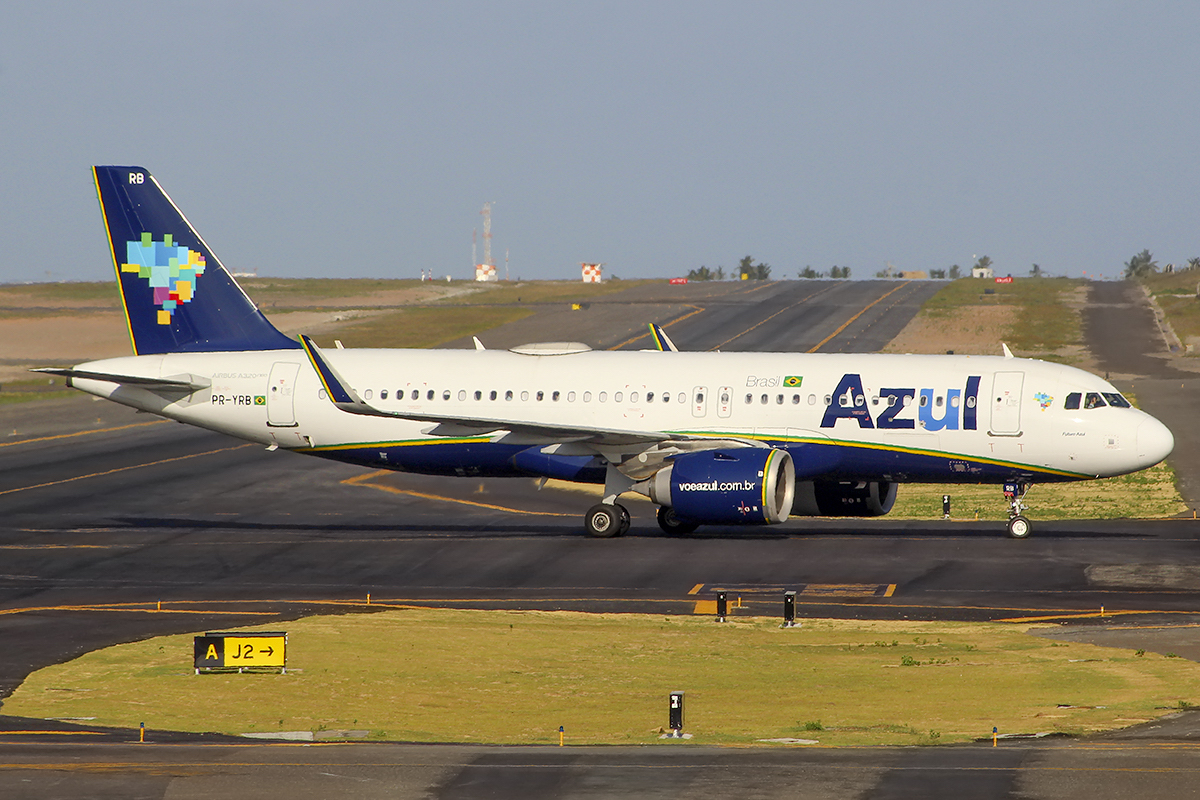Azul Looks Beyond Pandemic Expecting Its Best Year Ever

Photo Credit: Azul expects its best annual result with the pandemic in the rear-view mirror. Flickr / Alexandro Dias
The pandemic is over for Azul. The Brazilian airline is one of the first in the world to herald the arrival of the new normal for travel, and one that looks very bright.
"We are seeing a new, and greater pattern of demand," Azul CEO John Rodgerson said during the airline's first-quarter earnings call on May 9. The era of the pandemic cliche, "pent-up demand," is behind Azul, he added.
The airline's numbers show that new level of demand. Revenues at 3.2 billion Brazilian reais ($625 million) in the first quarter were 26 percent higher than they were three years ago, and that was even with a hit from the Omicron variant in January and February. Passenger traffic was up 15 percent. And Azul turned a net profit of 2.7 billion Brazilian reais, though it posted an adjusted net loss of 808 million Brazilian reais including foreign exchange and unrealized derivative results.
But Azul's results has some caveats. The airline is almost entirely a domestic carrier in Brazil — 89 percent of its passenger capacity in the first quarter — in a recovery that has favored domestic-oriented airlines. Its home market never saw the same level of stiff domestic travel restrictions that some other markets have seen, like Australia and within the EU. And, the clogs in global supply chains and rapid rise in commodity prices since Russia's February invasion of Ukraine in February have been a boon for Brazil's commodity-led economy, including its airlines.
"Brazil is an enormous commodity economy, and many of these commodities have record prices," the airline's founder David Neeleman said. "Azul has a significant presence in all these commodity areas of Brazil, where producers are expanding rapidly to meet world demand."
If there is an airline uniquely positioned to take advantage of the current global environment and fly ahead of the pack, it is Azul.
The airline's strong revenue performance is largely due to Azul's restored route map that extensively serves much of Brazil's interior rather than focusing on the triangle of São Paulo, Rio de Janeiro, and Brasilia, Raymond James analyst Savanthi Syth wrote in a note to investors on May 9.
Azul will fly more than 30 percent of its passenger capacity outside of Brazil's three largest cities in the second quarter, according to Cirium schedules. The number is just under 8 percent at Gol, and only 4 percent of Latam Airlines Group's domestic Brazil capacity.
"The midwest of Brazil is Azul’s country," Rodgerson said. Executives said that corporate travel in the oil and gas and agro-business sectors has fully recovered — areas that benefit Azul — while the government and finance travel recovery has lagged. Finance and government travel are concentrated in Brazil's three largest cities.
Logistics and Azul's other segments, including its vacations business and loyalty program, are also doing well. Cargo and other revenues more than tripled to 350 million Brazilian reais in the first quarter compared to three years ago. The airline continues to target a greatly expanded role in the country's logistics segment, which included the introduction of its first dedicated Embraer E195 freighter in February.
Azul seems to be ready to take its newfound strength for a spin. The carrier's partnership with United Airlines expires in June and the two have yet to reach an agreement on extending the pact. "They’ve been a great partner of ours, and we’re talking to them about the potential for an extension [but] kind of keeping it open," said Rodgerson. United owns 8 percent of Azul, and they two have discussed a potential U.S.-Brazil joint venture for several years.
However, in terms of its attempted to take over Latam, Azul has stood down as its larger competitor works its way through the Chapter 11 reorganization process. Executives said the airline is "respecting" Latam's process that, at this point, is focused on building creditor support for confirmation of its restructuring plan.
Unit costs excluding fuel at Azul were up nearly 18 percent over 2019 in the first quarter. However, executives pointed to data that show the metric as up just 1 percent over the period when excluding cargo expenses and the impact of foreign exchange. Average fuel expenses at Azul jumped 57 percent quarter-over-quarter to 4.25 reais per liter.
With the pandemic in the rearview mirror, Azul is bullish on its prospects. The airline forecasts earnings before interest, taxes, depreciation, and amortization (EBITDA) of roughly 4 billion Brazilian reais this year, which would be a 10 percent increase over 2019 and its best ever result. Passenger capacity will also be up 10 percent and unit revenues up as much as 20 percent. The forecast only improves in 2023 when EBITDA is expected to come in at roughly 5.5 billion Brazilian reais.
